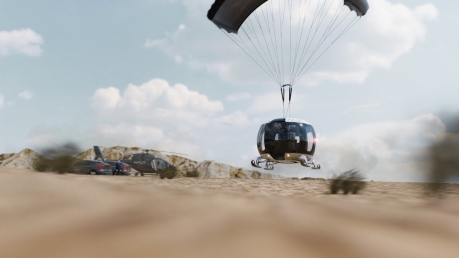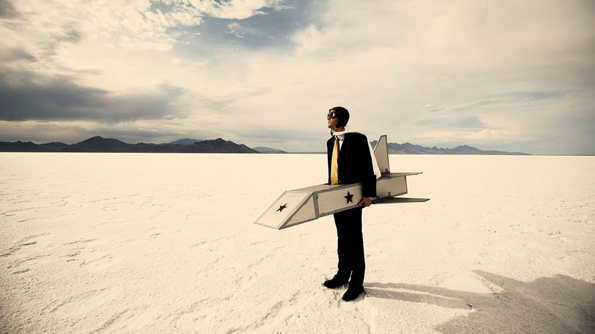3 min read • Aerospace & Defense
HALO SPACE ANNOUNCES SECOND TEST FLIGHT, ACCELERATING MISSION TO TRANSFORM SPACE TOURISM

London, March 29, 2023
-
Developed through Arthur D. Little’s Breakthrough Incubator Program, HALO Space will enable 10,000 passengers to experience the “Overview Effect” this decade
-
The second test flight for HALO Space will take place in southern Spain this year after its first test flight in India was completed successfully last December
-
HALO Space aims to lead the market for commercial space travel, which analysts predict will reach $14 billion by 2030
-
The net-zero company plans to operate sustainable, eco-friendly flights in line with its commitment to environmental responsibility
HALO Space, a global space tourism company developed via Arthur D. Little’s Breakthrough Incubator Program, has announced the next stage of its journey toward launching its innovative edge-of-space experience. HALO Space’s second test will take place in southern Spain this year after its first test flight in India was completed successfully last December.
HALO Space is committed to enabling 10,000 passengers in this decade to experience the “Overview Effect”, where the Earth’s curvature and the darkness of space can be observed. From 2025, HALO Space will lift eight passengers per flight up to 40 kilometers into the stratosphere for a transformative experience lasting four to six hours.
With a mission to offer safe, sustainable, and eco-friendly journeys, HALO Space aims to lead the market for commercial space travel, which analysts predict will reach $14 billion by 2030. The company has been supported since its inception by Arthur D. Little, which has a deep history in space technology stretching back to the Apollo missions of the 1960s.
Thomas Kuruvilla, Managing Partner of Arthur D. Little Middle East and member of the Board of Directors at HALO Space said: "HALO Space was established thanks to Arthur D. Little’s Breakthrough Incubator program, and this next test flight is a significant milestone in the development of space tourism. Each component of the HALO concept, including the stratospheric balloon, capsule prototype, onboard systems, and descent with a parachute, has been successfully tested in collaboration with our technical partners. It demonstrates that the technology and safety measures are in place to make suborbital flights accessible to civilians in the near future.”
Priced between $100,000 and $200,000, HALO Space aims to make 400 commercial trips and carry 3,000 passengers a year from 2029 onwards. This will make space travel affordable for millions of people, inspiring a new generation of explorers and innovators to push the boundaries of what's possible in space.
HALO Space is also setting the safety standards for near-space systems and operations through its innovative HALO system, designed and built by five leading aerospace companies. It will operate year-round from spaceports on four continents based on the predictability of weather conditions, topography, airspace, and touristic attractiveness.
HALO Space’s ascent and descent are safe and gentle, making it possible for adults of virtually any age and physical condition to enjoy this once-in-a-lifetime event. It plans to operate sustainable, eco-friendly flights in line with its commitment to environmental responsibility.
Carlos Mira, HALO's CEO and senior advisor at Arthur D. Little, added: “HALO Space will pave the way for near-space tourism, making it possible for ordinary people to travel to space and witness the beauty of our planet from a unique perspective. By making space accessible to more people, we hope to democratize access to space and create a more inclusive future for humanity.”

3 min read • Aerospace & Defense
HALO SPACE ANNOUNCES SECOND TEST FLIGHT, ACCELERATING MISSION TO TRANSFORM SPACE TOURISM

DATE

London, March 29, 2023
-
Developed through Arthur D. Little’s Breakthrough Incubator Program, HALO Space will enable 10,000 passengers to experience the “Overview Effect” this decade
-
The second test flight for HALO Space will take place in southern Spain this year after its first test flight in India was completed successfully last December
-
HALO Space aims to lead the market for commercial space travel, which analysts predict will reach $14 billion by 2030
-
The net-zero company plans to operate sustainable, eco-friendly flights in line with its commitment to environmental responsibility
HALO Space, a global space tourism company developed via Arthur D. Little’s Breakthrough Incubator Program, has announced the next stage of its journey toward launching its innovative edge-of-space experience. HALO Space’s second test will take place in southern Spain this year after its first test flight in India was completed successfully last December.
HALO Space is committed to enabling 10,000 passengers in this decade to experience the “Overview Effect”, where the Earth’s curvature and the darkness of space can be observed. From 2025, HALO Space will lift eight passengers per flight up to 40 kilometers into the stratosphere for a transformative experience lasting four to six hours.
With a mission to offer safe, sustainable, and eco-friendly journeys, HALO Space aims to lead the market for commercial space travel, which analysts predict will reach $14 billion by 2030. The company has been supported since its inception by Arthur D. Little, which has a deep history in space technology stretching back to the Apollo missions of the 1960s.
Thomas Kuruvilla, Managing Partner of Arthur D. Little Middle East and member of the Board of Directors at HALO Space said: "HALO Space was established thanks to Arthur D. Little’s Breakthrough Incubator program, and this next test flight is a significant milestone in the development of space tourism. Each component of the HALO concept, including the stratospheric balloon, capsule prototype, onboard systems, and descent with a parachute, has been successfully tested in collaboration with our technical partners. It demonstrates that the technology and safety measures are in place to make suborbital flights accessible to civilians in the near future.”
Priced between $100,000 and $200,000, HALO Space aims to make 400 commercial trips and carry 3,000 passengers a year from 2029 onwards. This will make space travel affordable for millions of people, inspiring a new generation of explorers and innovators to push the boundaries of what's possible in space.
HALO Space is also setting the safety standards for near-space systems and operations through its innovative HALO system, designed and built by five leading aerospace companies. It will operate year-round from spaceports on four continents based on the predictability of weather conditions, topography, airspace, and touristic attractiveness.
HALO Space’s ascent and descent are safe and gentle, making it possible for adults of virtually any age and physical condition to enjoy this once-in-a-lifetime event. It plans to operate sustainable, eco-friendly flights in line with its commitment to environmental responsibility.
Carlos Mira, HALO's CEO and senior advisor at Arthur D. Little, added: “HALO Space will pave the way for near-space tourism, making it possible for ordinary people to travel to space and witness the beauty of our planet from a unique perspective. By making space accessible to more people, we hope to democratize access to space and create a more inclusive future for humanity.”



